Beginners or experienced tennis players should learn about the different parts of a tennis racket. The knowledge you gain here will also be useful later on when you learn advanced tennis techniques.
You will also hear such terms when you receive tennis training from a professional coach about different parts of the racket it be it the ‘head’ or the ‘grip’. Also, it is essential to understand how a tennis racket works so you won’t have to struggle with terms and can concentrate on practice and your game instead.
The same goes for replacing or buying a new racket- getting familiar with its characteristics can help. You can produce a good game if you have the right equipment. Also, check our guide on Best Tennis Rackets of 2023
Do you know what each part of a tennis racket does? Almost everyone knows that tennis racquets have several parts. A tennis racquet has many parts, and we will explain what each one does in this blog post.
No matter how experienced you are or how new you are to the game, you can improve your game by learning what each part of your racquet does. I’m looking forward to getting started!
Let me first name the parts of a racket before going into details. There are a variety of parts to a racket, including butts, butt caps, handles, grips, grip tape, collars, bevels, shafts, throats, heads, rims/frames, beams, grommets, grommet strips, bumper guards, strings (main and cross), sweet spots, and dampeners. It is a lot to take in right..
Tennis Racket Parts Diagram
Technology has advanced leaps and bounds over the years, but the core parts of a tennis racquet have remained largely the same.
This diagram shows the Babolat Pure Aero 2023 Racquet so you can get an idea of how it works.
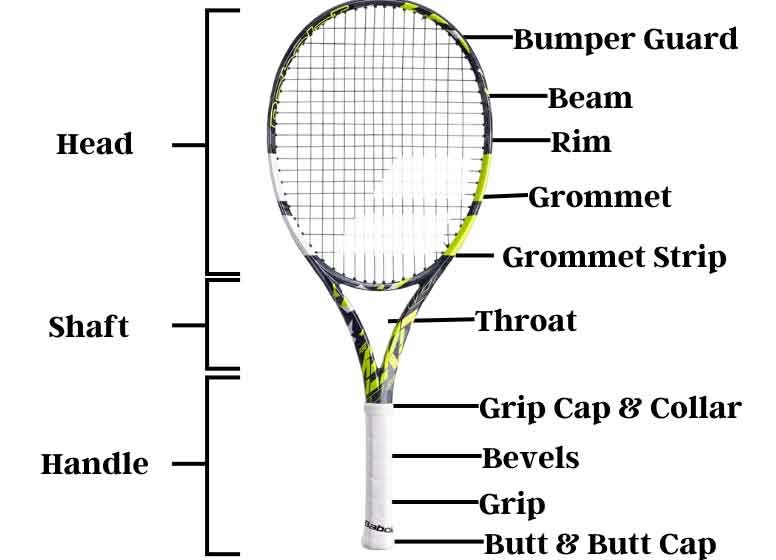
Specs vs. parts of a racket
Tennis rackets differ in the various parts and specs, so it’s important to understand the differences.
Racket specs refer to the unique nuances that make each racquet unique, like the weight of the racquet. Racquet parts refer to the names of the components that all racquets have in common.
Tennis rackets are a fairly important part of the game. We’re focusing on the tennis racket parts in this article.
Different Parts of a Tennis Racket Described in 2024
Let’s take a closer look at the parts of a tennis racquet and explain them briefly.
Butt Cap
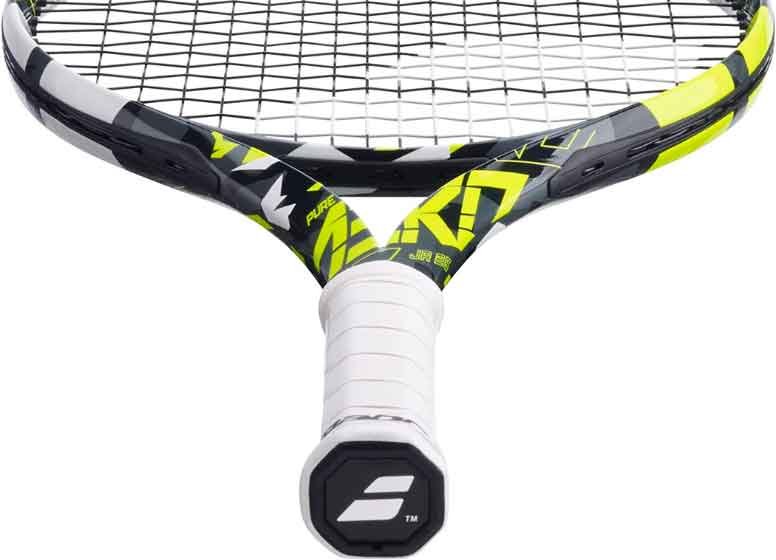
Typically, racket butt caps are pieces of plastic that increase the size or flare out the bottom of the handle, making the racquet easier to hold.
When the trap doors on some butt caps are removed, they can be used as a place to customize the weight of a racquet.
In addition to the logo, racket manufacturers often print the handle size on their racquets.
Butt
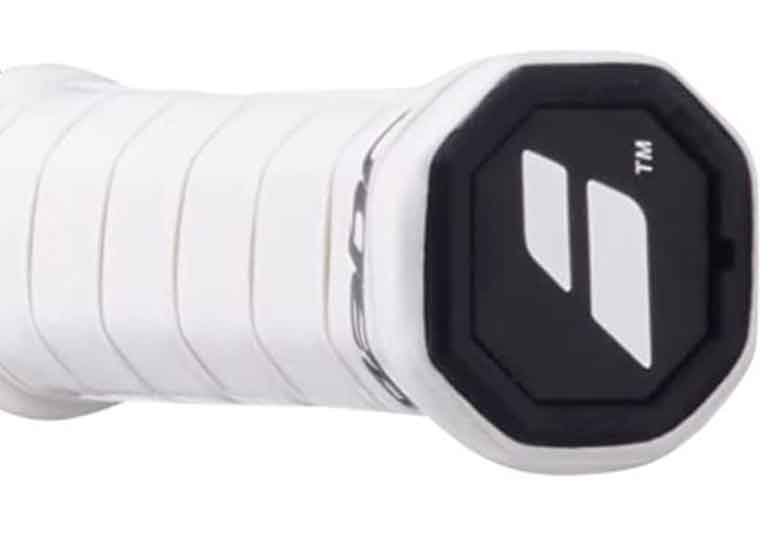
The butt cap, on the other hand, refers to the piece of plastic at the end of the handle of a tennis racket.
Handle
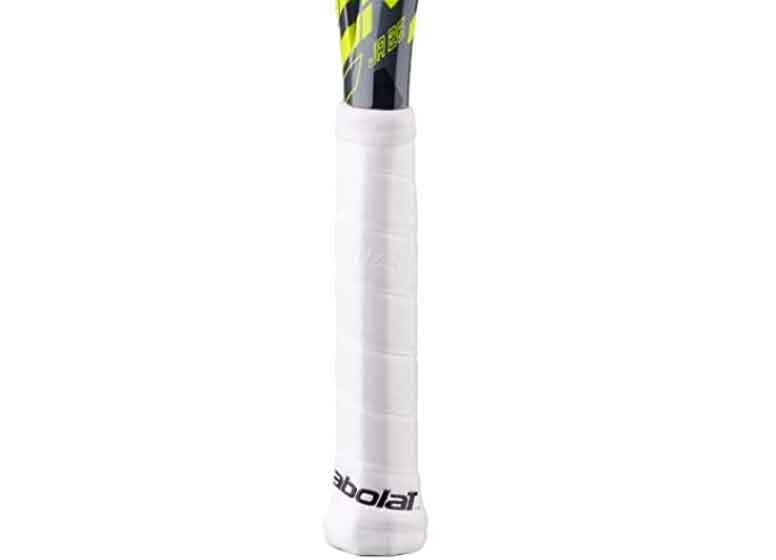
As the name suggests, the handle refers to the whole area where the player sits down to hold the racquet.
The longer handles on extended-length tennis rackets typically increase the overall size of the racquet, allowing players to leverage and power the racket more effectively.
An average tennis racquet’s handle measures between 4 and 458 inches in circumference. A handle that is too small or too large can cause injury, so choosing the correct size is crucial to ensuring comfort.
Grip
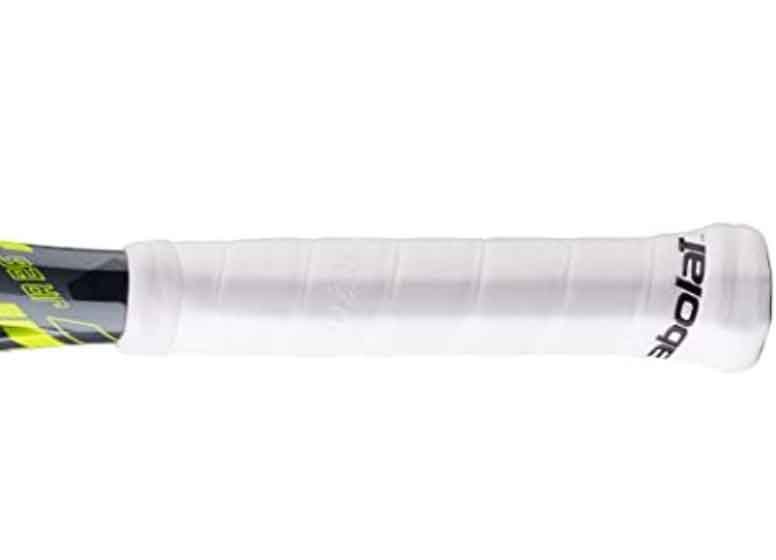
It protects a player’s hand from the harsh surface of the handle, while also providing traction that ensures a firm grip to prevent slipping of the racquet. A tennis racket’s grip serves a dual purpose: to cushion the players’ hands from the handle’s harsh surface while also providing traction to prevent the handle from slipping.
Overgrips are available for extra grip and sweat absorption if needed, so you can switch out the stock grip with a replacement grip.
You may enjoy reading How to Hit a Forehand in Tennis
Grip Tape
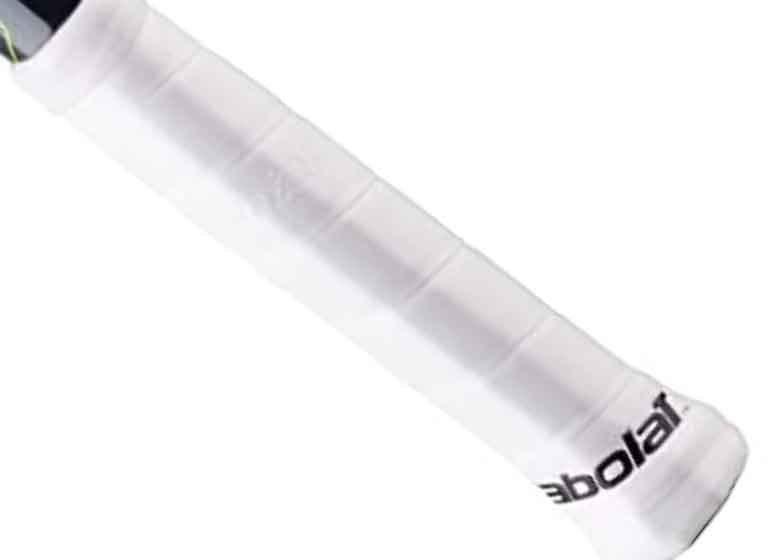
An adhesive grip tape is found at the top of the handle of the racquet, preventing the grip from unraveling.
Collar
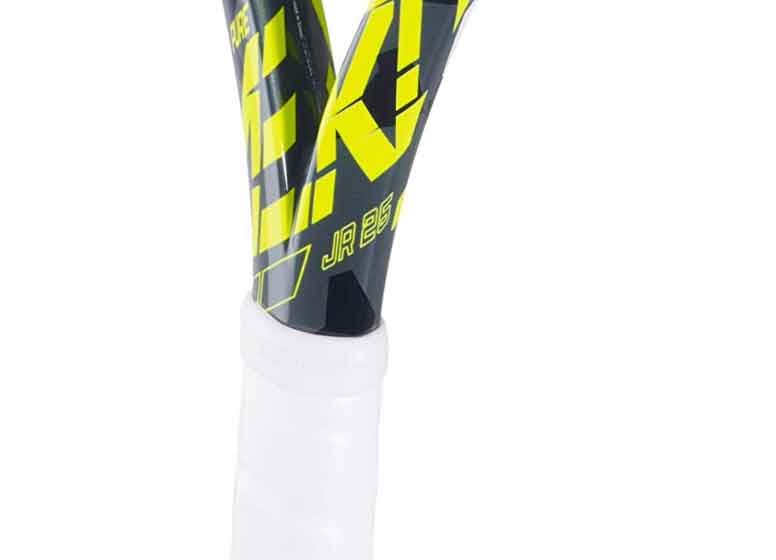
Rubber collars can be added to some racquets for extra security, and can also be used to secure overgrips instead of standard grip tape.
Handle Bevels
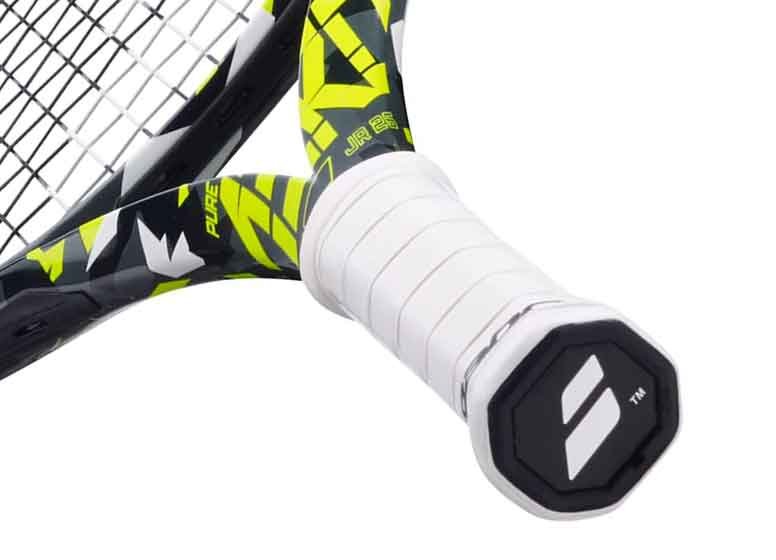
In a player’s hand, racquet handles have eight sides or bevels that prevent them from twisting or rotating. As well as serving as guides for gripping tennis racquets, they also serve as instructional aids.
Shaft & Throat

It consists of the part between the head and handle of a tennis racquet, where the throat is either open or closed.
A wooden racquet with a closed throat is typically made of wood, whereas a racquet with an open throat splits into two sections and is shaped into a head, as in this case.
Almost all racquets’ flex can be attributed to the neck’s design. When hitting, racquets that have less flex at the throat tend to generate more power.
Main Strings
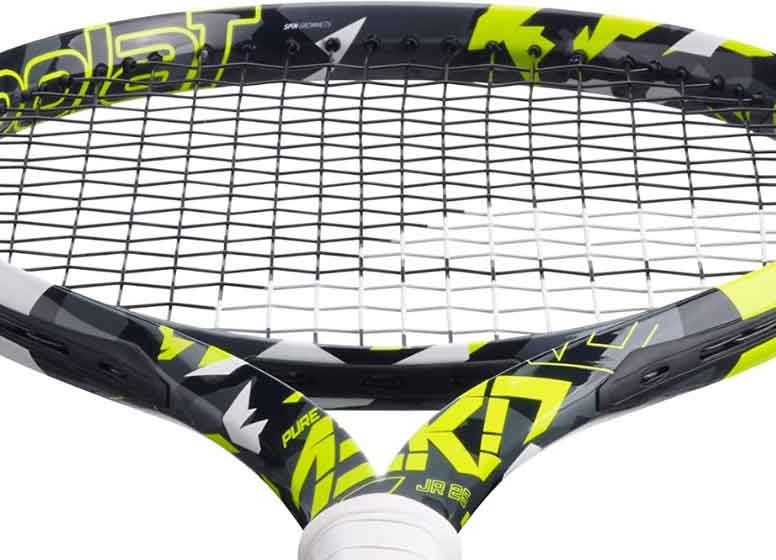
It is the mains of the tennis racquet which run vertically through its head.
Cross Strings
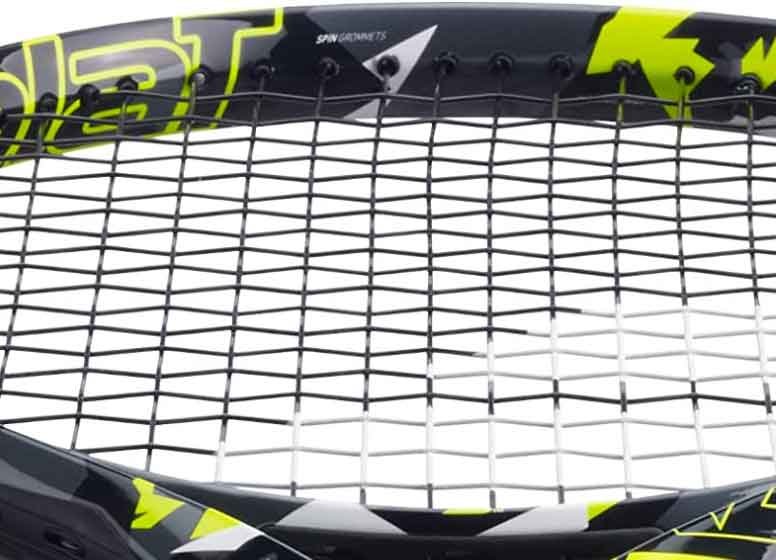
There are crosses when the strings run horizontally.
Face
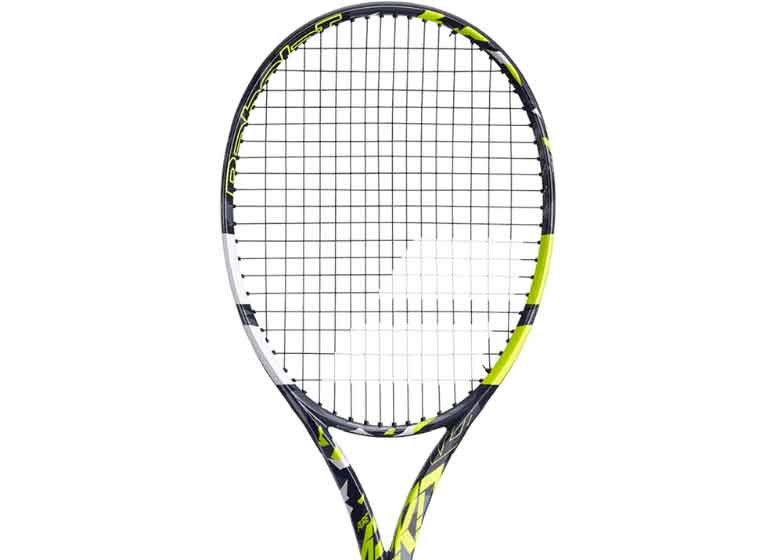
Tennis racquets have faces formed by tennis strings when woven together.
Head
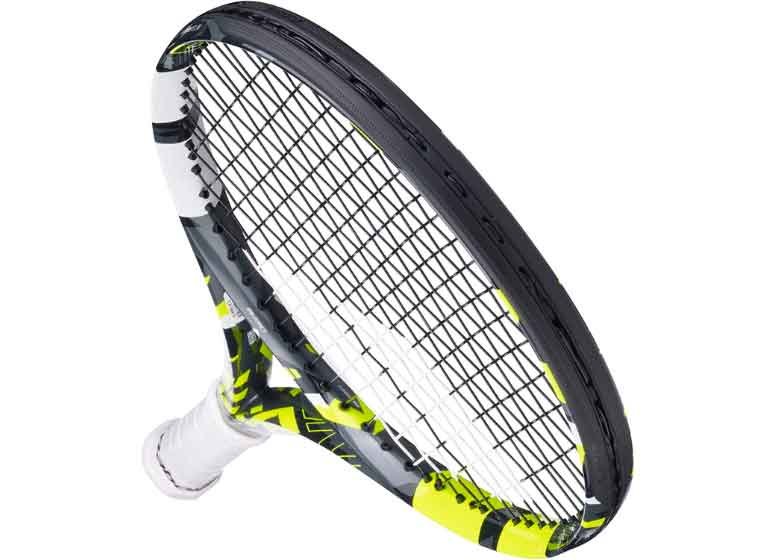
To create a striking surface, the strings are installed in the oval portion of the racquet’s head.
There can be a significant difference in head size between racquets. However, most heads measure between 95 and 110 square inches on average. It is recommended to use racquets with 100 square inches or more for beginners, so there is more room for error.
In general, the size of the head of a racquet directly affects its power. When a player uses a racquet with a larger head, more power is provided, while when the head is smaller, more control is gained.
you may enjoy reading How to Sleep with Tennis Elbow
Rim
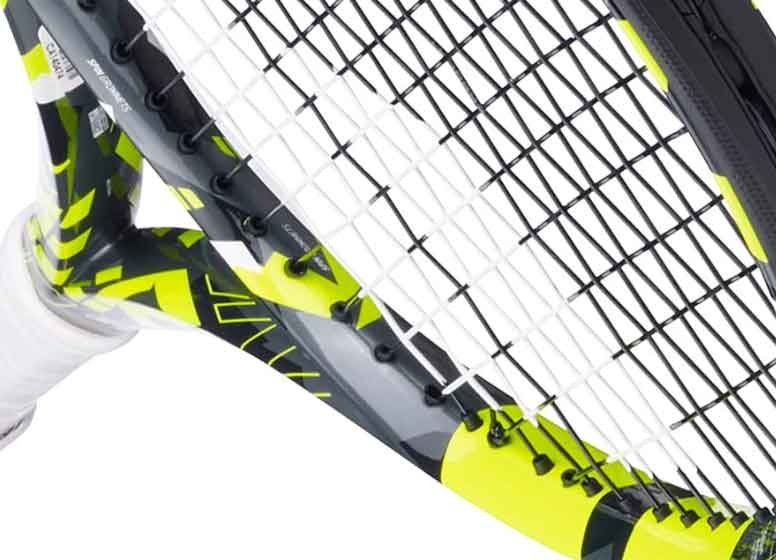
Tennis racquets have rims, which are the outer edges of their heads, like the edge of a cup.
Beam

Depending on the type of tennis racquet, the beam of a tennis racquet can be thicker or thinner.
Racquet performance is greatly impacted by the beam, which is often overlooked.
It is common to see power racquets with wider beams, which increase stiffness while allowing strings to move more freely and generate more power.
As well as being more flexible, control racquets also limit string movement, resulting in an added sense of control.
By placing racquet beams side by side, you can easily compare different racquets, something that is worth taking into account when buying a new one.
Grommet Strips
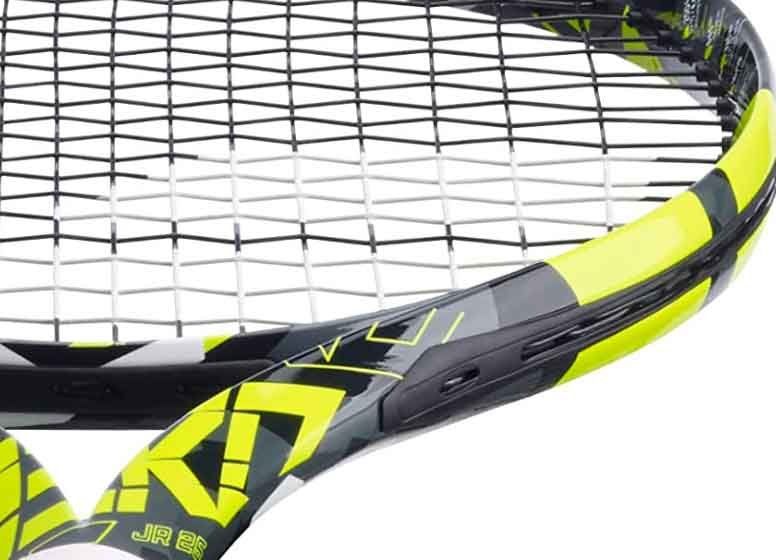
There are plastic tennis racket grommets around the head of the racquet. Strings are protected from sharp edges by inserting them through the side of the frame where the strings pass through holes.
Grommets
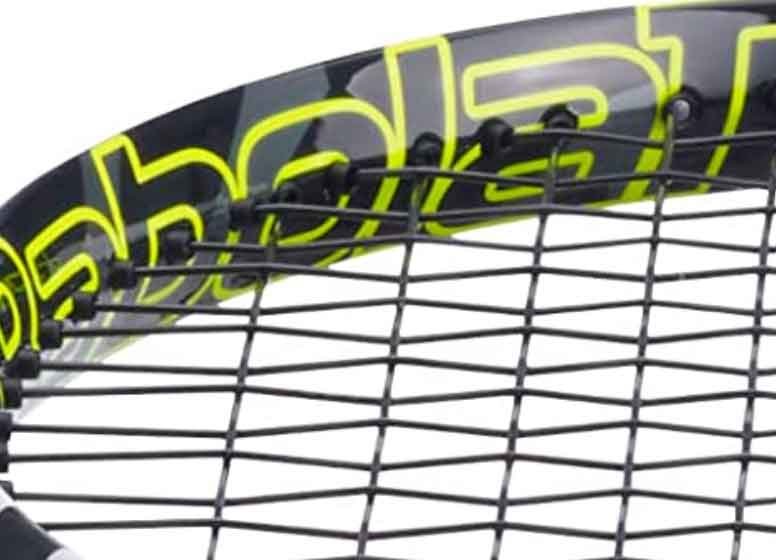
A grommet is a small barrel or tunnel that inserts through the frame along the grommet strip.
Strings may be restricted or allowed to move by changing the width or design of grommets.
You’ll find wider grommets on power racquets to allow better string movement, while narrower grommets on control racquets will restrict movement.
Bumper Guard
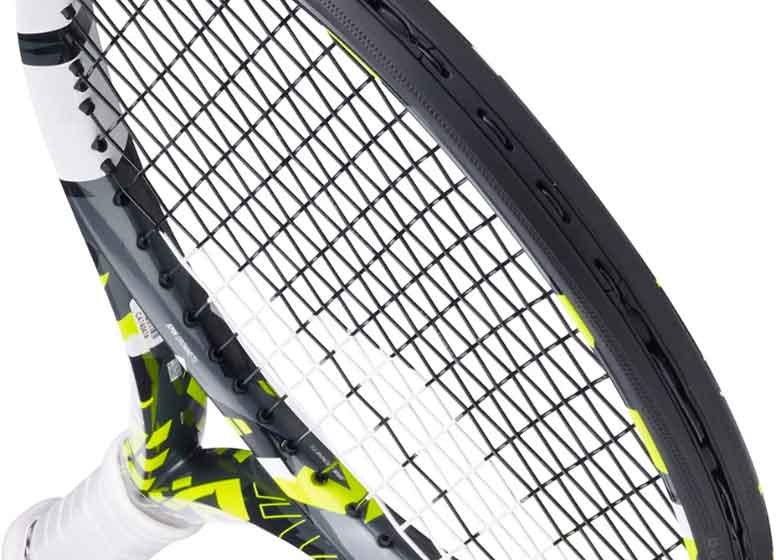
Racquet heads have bumper guards that protect the strings as they scrape or contact the court periodically.
The bumper guards on your racquet will eventually need to be replaced, despite their durable plastic material. Without a frame replacement, the frame may become exposed and crack or break prematurely.
Strings
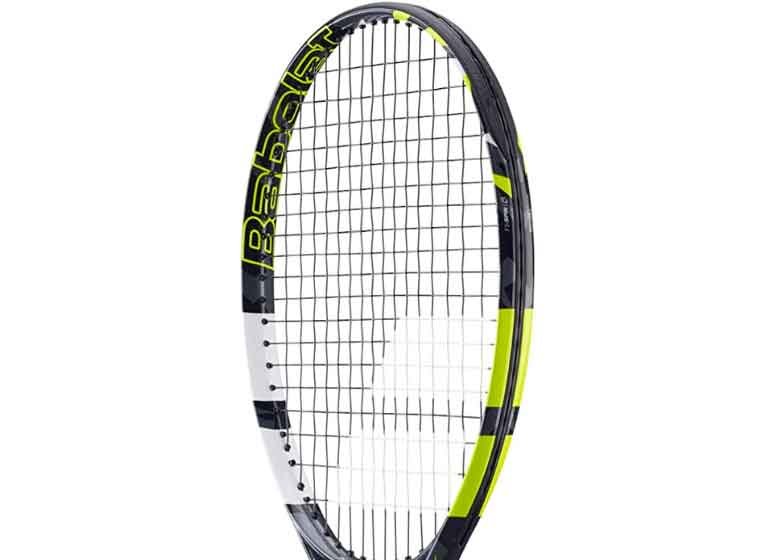
Strings provide the flat trampoline-like hitting surface that can be seen on tennis racquets.
A racquet’s performance can be greatly influenced by the string it is strung with, as string comes in different gauges, thicknesses, and materials.
Power, control, spin, and durability are all directly affected by racquet tension.
Faqs
How do I choose the right grip size for my tennis racquet?
To determine the correct grip size, measure the distance from the tip of your ring finger to the second crease on your palm. Consult a grip size chart to find the corresponding grip size based on your measurement.
Can I restring my tennis racquet with different types of strings?
Yes, you can choose different types of strings for your racquet based on your playing style and preferences. Consult a professional stringer or refer to the racquet’s manufacturer guidelines for recommended string options.
Should I opt for a lighter or heavier tennis racquet?
The choice between a lighter or heavier racquet depends on your playing style and physical abilities. Lighter racquets offer greater maneuverability, while heavier racquets provide more power and stability.
How often should I replace the strings on my tennis racquet?
It is recommended to restring your racquet every 3-6 months, depending on your frequency of play and the condition of the strings. Regular string maintenance helps maintain optimal performance.
Can I use a dampener on any tennis racquet?
Yes, dampeners can be used on most tennis racquets. However, it’s always advisable to check the racquet’s specifications or consult with a professional to ensure compatibility and proper installation.
What is the end of a tennis racket called?
An end of a handle is called a butt. A string area is defined by the boundaries of the racket’s head and is typically consisted of main strings (running parallel to the racket’s length) or cross strings (running at right angles to the main strings):
What is the name of the part where we hold the racket?
In tennis, the handle is the entire surface where the player holds the racquet with their hands.
What is the net part of a tennis racket called?
During a tennis match, the strings contact the ball with the tennis racquet. Within the head (or “hoop”) of the racquet, strings are woven together.
What are the strings on a tennis racket called?
Strings that run vertically from the frame’s tip to the throat are known as mains. There is always a list of main strings at the top. Cross strings are indicated by the number 18. A racquet’s cross, as it’s often called, runs horizontally.
Final Thoughts
This article about the different parts of a tennis racquet hopefully helped you.
Having learned the tennis racquet parts, choose a ball that lasts long and practice tennis alone. Tennis grip and eastern forhand grip can be used in the upcoming Australian Open Tennis 2023 and Monte Carlo Tennis 2023.
Furthermore, volleyball shoes can be used while playing tennis in the wind.
In the comments, please feel free to ask any questions you may have. Our team is here to assist you!


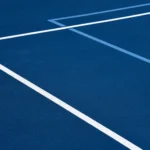

Comments are closed.